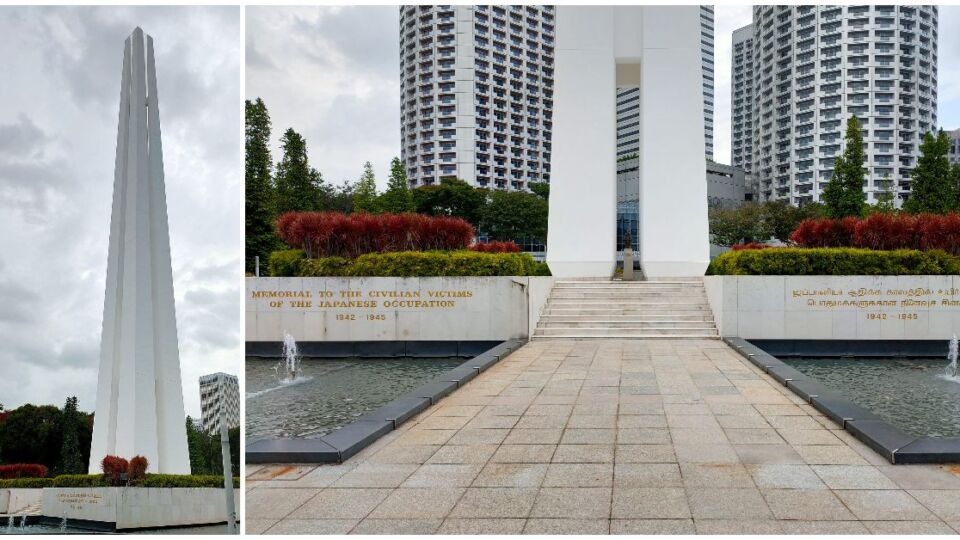Secret City is a series showcasing lesser-known things, places, facts and even food about our city.
While Singapore is known for its gleaming modern buildings in the city centre, there are also some structures that share a darker past.
The pretty and peaceful park near the Esplanade is also home to the Civilian War Memorial. It’s hard to miss the tall white structure, which comprises four columns that eventually merge.
What is it?
The monument is dedicated to civilians who died during the Japanese Occupation of Singapore from 1942-1945.
The monument is also known as the “chopsticks” sculpture because it resembles the eating utensils – but of course, blown up to gigantic proportions.
It actually didn’t start out looking like that – Leong Swee Lim from the architectural firm Swan and Mclaren first pitched a rectangular raised platform enclosing a vault in which the remains of victims would be placed. A 30-metre-high archway was also part of the initial design.
However, the design had to be amended when the original plan of cremating the remains had to be changed to reburial, out of respect for the different religions of the victims – eg. Muslims cannot be cremated.
Some say that the monument’s resemblance to “chopsticks” is actually deliberate but we cannot confirm that.
The structure was unveiled on Feb. 15, 1967 – a day that is also known as Total Defence Day – exactly 25 years after the day Singapore fell to the Japanese.
Before the unveiling which was presided over by then prime minister Lee Kuan Yew, prayers were said by leaders of the Inter-Religious Council representing Muslim, Buddhist, Christian, Hindu, Jewish, Sikh and Zoroastrian faiths.
A dark chapter in Singapore history
During the Japanese Occupation, an operation known as Sook Ching was carried out in which the Japanese set out to eliminate any anti-Japanese elements and propaganda in the Chinese community.
Chinese males from 18 to 50 years old were interrogated and rounded up over the course of two weeks – those suspected of being anti-Japanese were executed cruelly.
Areas like Punggol Beach (now Punggol Point), Changi Beach, Sentosa and others are known to be execution sites.
It was only in 1962 that several mass war graves were uncovered in Siglap during sandwashing operations.
After further investigations, more human remains were found in mass war graves in other parts of Siglap and Changi Road.
Up till today, the total number of people killed during the occupation is still unknown due to conflicting records. It is estimated to be anywhere between 6,000 to 50,000.
Did you know…
The Singapore Chinese Chamber of Commerce and Industry (SCCCI) – which also commissioned the investigation and exhumation of mass graves – decided to gather the remains and create a memorial for them in 1962.
On top of proposing a site for a memorial monument, the SCCC also wanted to seek compensation from the Japanese government for the Sook Ching massacre.
In 1963, the Singapore government announced that it would set aside a piece of land along Beach Road for the building of a memorial and park to commemorate the civilian victims massacred during the Japanese Occupation.
In addition to this, the remains from the mass graves discovered would be cremated and the remains be placed in urns beneath the proposed memorial structure.
If you’re observant, you can find the exact urn that is used to contain the remains in the middle of the four columns – but it is empty.
So if you’ve come here to pay your respects to the fallen civilians or simply have a moment of peace in the middle of the city, know that you’ve kinda been chilling on top of an actual graveyard.
These days
The memorial has been gazetted as a national monument since 2013.
More recently, the memorial was in the news because of some kid’s moment of douchery, when he used the pool to do some wakeboarding stunts. Hopefully understanding the true significance of the memorial, and the dark chapter of history it represents will make more young people appreciate it.
Other stories to check out:




